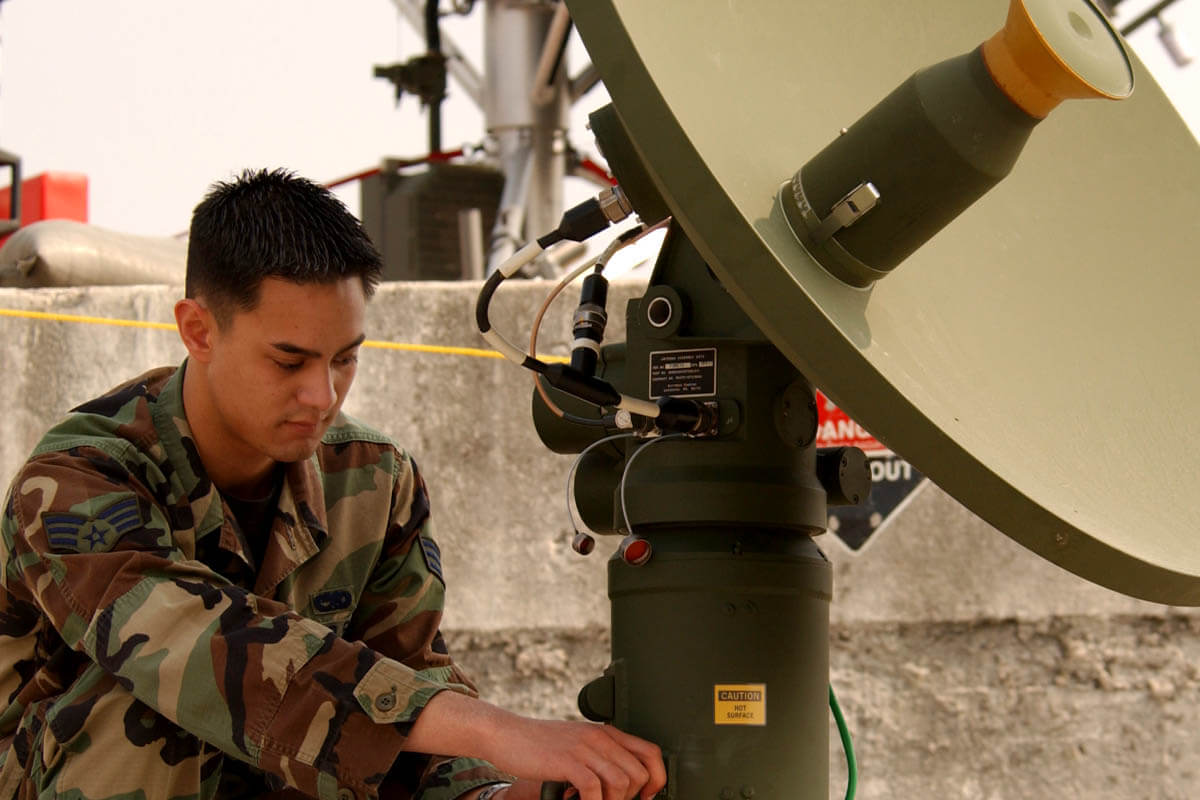
The Protected Tactical Enterprise Service and Protected Tactical Waveform are conferring important resilience enhancements on US military satellite communications.
The United States’ Space Systems Command (SSC) has taken an important step forward in helping safeguard the security of US Satellite Communications (SATCOM). The SSC is the development, acquisition, launch, logistics and field command of the US Space Force (USSF).
In a press release published in March the SSC said it had performed a successful connectivity test linking a Protected Tactical Enterprise Service (PTES) communications hub with a test terminal and modem. The modem was developed by the Army-Airforce Antijam Programme Office. It carried the Protected Tactical Waveform (PTW) which linked all these assets to one another. A resilient SATCOM waveform, the PTW is hardened against electronic attack using anti-jam techniques.
Open sources say this resilience is achieved using frequency hopping techniques. The sources add that the PTW is to be employed in heavily congested and contested electromagnetic environments. The waveform can use US Department of Defence (DOD) and commercial SATCOM constellations. It can also be carried across allied military SATCOM systems. For example, in 2020, the USSF demonstrated that the waveform could use the United Kingdom’s Skynet military communications satellite constellation.
PTES Components
According to US Air Force documents the PTES provides resilient tactical SATCOM across the Boeing Wideband Global SATCOM constellation. Three components comprise the PTES; a mission management system, key management system and key loading and initialisation facility. These elements are deployed at Defence Information Systems Agency (DISA) Core Data Centres. DISA says it has nine of these centres deployed around the world.
The PTES initiative also provides the Joint Hubs used to plan the provision of global SATCOM services involving the WGS constellation at existing DOD SATCOM ground stations. The initial PTES capability will provide these services regionally using one WGS satellite. The full PTES capability will use up to ten WGS satellites to provide worldwide coverage.
Into Service
A Boeing spokesperson told Armada that the PTES “consists of both software and hardware components.” During the recent test the “end-to-end capabilities of PTES” were demonstrated. “Data was sent from a PTES ground-based joint hub through a communications satellite to a ground-based user terminal modem utilising the PTW.” The test was the first “end-to-end test of all the components to prove the PTES design is ready to field anti-jam capability for US DOD WGS satellites,” the spokesperson continued. Essentially, the PTES is the ground system managing the transmission of the PTW.
PTW use does not necessitate any modification to the spacecraft, be those civilian or military, carrying the waveform. The spokesperson continued that the only modification necessary to allow a SATCOM terminal to use the PTW is a new modem. They added that the PTES initial operational capability is expected to be fielded in 2024 when the system will be considered mission ready.

by Dr. Thomas Withington












